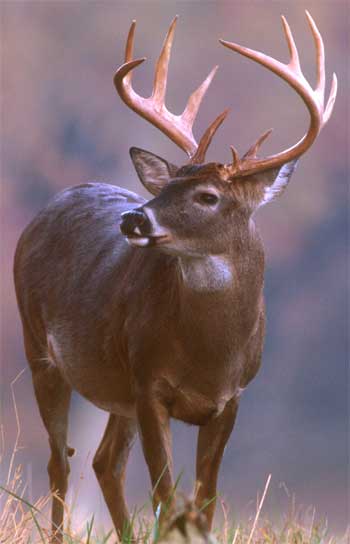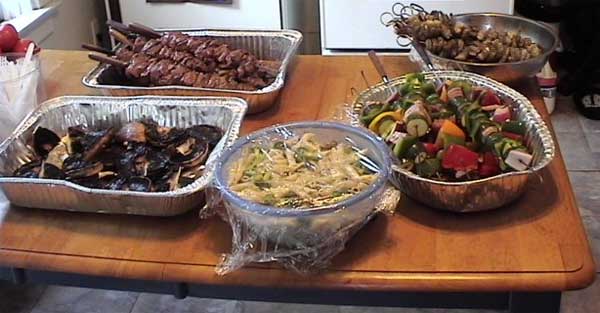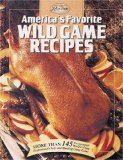Nutrition; An Argument for the Value of Sustenance Hunting
Unfortunately, the contents of our gardens, forests and waterways don’t come with a nutritional label like the products that line the aisles of our super markets. Putting aside the sometimes “creative’ efforts that go into creating those labels, I think most of use instinctively know that many of these home-grown and field-harvested alternatives just might be more nutritious for us than their industrial alternatives. Let’s take a look at some of the nutritional realities of wild hunting verses the product of feed lots.
As a disclaimer, l would like to emphasize that I’m not talking about “bush meat” or the hunting of endangered species, but rather species that exist in managed wilderness areas that now lack sufficient predator control. Hunting in these areas plays an important role in managing population as well as encouraging the preservation of the lands upon which they dwell.
The Place of Modern Hunting in Our Culture
Each year hunting puts, literally, hundreds of millions of pounds of lean, healthful meat in freezers, on pantry shelves, and on tables all across our country. Subsistence hunters in parts of Alaska and northern Canada still depend upon wild animals as their sole or primary food source. Even in the lower 48 states, wild meat consumption is not always just a matter of personal preference.
Many individuals in rural areas provide a significant portion of the meat for the table from wild game and thereby stretch or replace dwindling food dollars. Hunters and fishers from all walks of life take to the outdoors each year to add to their larder.
In Wisconsin alone, for example, an estimated 400,000 deer were taken during a recent hunting season. They yielded, at an average dressed weight of 100 pounds per deer, 40 million pounds of meat. In addition, the fields and waterways of the state yielded additional millions of pounds of small game animals, game-birds, waterfowl and fish to hunters and fishers. Each of the 49 other states can boast similar numbers with their own indigenous species providing comparable quantities of meat for hunters in their states.
As a result, the use of wild meat can and does contribute to the health and well-being of North American families.
The Ancient Hunter-Gatherer
It should come as no surprise that our primitive forebears ate wild meat regularly. Further, evidence suggests that modern man is wise in his imitation of some of those primitive dietary habits.
 For the most of the last 50,000 years or so, man’s diet consisted of about 34 percent meat and about 65 percent plants such as nuts, seeds, roots, tubers, fruits, and leafy green plants. Man was a hunter and gatherer.
For the most of the last 50,000 years or so, man’s diet consisted of about 34 percent meat and about 65 percent plants such as nuts, seeds, roots, tubers, fruits, and leafy green plants. Man was a hunter and gatherer.
Agriculture came along much more recently. Cultivated grains were not introduced to the diet until about 10,000 years ago and dairy products came into use only in the last 6,000 years or so. In other words, primitive man not only subsisted but thrived on a diet based on only two of the basic food groups considered today to be essential to good health. In fact, he managed to get an average daily intake of about 1,500 mg of calcium, without consuming any dairy products at all. That level is at least 50 percent greater than is usually recommended for us today. Early man did have one thing in his favor, however. The quality of his food was significantly better than that of today. Contributing to that difference is the fact that wild meat is nutritionally superior to the meat from domestic animals.
The Nutritional Factors of Wild Game
Wild meat is some of the most healthful which we can consume. No domestic animals are more humanely raised than the wild animals which roam our fields and forests. It is naturally lean and flavored by the wide variety of high quality natural foods instinctively chosen by the animals, and is not subjected to the hormones or chemical additives found in so many commercially raised meats. Wild animals also get plenty of exercise in both hunting for their own food and trying to escape predators which would devour them.
Farm animals, on the other hand, are force-fed synthetic feed mixtures designed to put on weight. They are also confined to small areas where they can’t get enough exercise. For these reasons, primitive man ate meat which was only about four percent fat, compared to our traditional beef, which is up to 30 percent body fat. A high fat intake has been linked to increased risks of both heart disease and cancer. Incidentally, primitive man himself was only about four percent body fat. He consumed very little fat, absolutely no junk food, and got plenty of exercise just trying to catch his dinner.
Another important difference is that wild game contains a substance called E.P.A., whereas domestic animals do not. E.P.A. (eicosapentaenoic acid) is a protective fatty acid which improves the flow characteristics of blood. It acts as a sort of natural antifreeze to keep the fluids and organs of wild animals from becoming stiff in even the most frigid weather. Not surprisingly, the colder the climate, the more E.P.A. wild game contains. It is even found in higher concentrations in their legs and hooves—which make contact with the snow and cold ground—than in their torsos. Scientists are just now discovering that E.P.A. in the human diet can be a protective factor against heart attacks, atherosclerosis (hardening of the arteries), and certain forms of arthritis.
Nutritionally, wild meats compare very favorably with domestically raised meats. In many cases, some nutritive values exceed those of similar domestic counterparts.
Generally speaking, nutritional information on wild game species is less comprehensive than on more commonly consumed meats. Two areas of current interest are cholesterol and fat content in foods, especially in “red” meat.
Most game meats, except bear and raccoon, are relatively low in fat. With a few exceptions, cholesterol values are similar among meat, poultry, fish and game. While antelope, caribou, venison, wild rabbit, and veal tend to have slightly higher cholesterol content than other meats, they should not be put at a nutritional disadvantage since they are lower in total fat than some other meats.
Remember, current dietary recommendations advise Americans to reduce total fat and saturated fat in the diet and to limit daily dietary cholesterol. Trimmed 3.5 oz. portions of game products as listed in the accompanying table can easily be included in meals consistent with those recommendations.
 |
If the hunter or a family member has heart problems, he or she will benefit from knowing the cholesterol and fat content of what they bring home.
A concerned consumer needs to first understand that cholesterol is an integral part of the cell membrane of animals and so the cholesterol content of meat is actually more closely tied to the membrane of muscle cells than to the fat content of the muscle. This means, as a rule of thumb, that game meat tends to have the same amount of cholesterol as beef or pork. However, since game gets more exercise, game meat has considerably less fat than domestic meat.
Hunters also like the organ meats. They should keep in mind that the cholesterol of heart muscle is 275 mg/100 g of tissue but is low in fat. Liver is, of course, a rich source of cholesterol at 450 mg/100g. The extent of worry about these figures should be balanced with how often these organ meats are eaten. If liver and onions is eaten once or twice a year, then a moderate portion should not cause problems.
Fat content of domestic animals is, on the average, nearly four times as much for the wild ones. Domestic duck have only about 70 percent of the protein but 350 percent of the fat of wild duck. Diet and exercise are the obvious factors responsible for these differences.
Wild game provides, on the average, 200 percent of the calcium, 240 percent of the iron and over 300 percent of the vitamin B-2 found in domestic meats. Wild duck has over 200 percent of the calcium, over 350 percent of the iron, 170 percent of the vitamin B-1 and over 350 percent of the vitamin B-2 found in domestic duck.
Incorporating Wild Game Into Cuisine
In any recipe, most wild meat can be readily substituted for meat from the supermarket or butcher shop. If the game is killed quickly, dressed properly, and handled carefully, there is no good reason for anyone not to enjoy the taste of wild meat. One important tip to preserving the nutritional value and flavor of fish and wild game is to be careful to never overcook it.
The more you experiment with different types of wild game in your cooking, and the more creative you are in the seasoning you try, the more comfortable and accomplished you will become at cooking wild fare.
Simply put, using wild animals for food, as well as for hides, furs, and other articles involves personal choices. Whether we choose to hunt and use wild meat is up to us. But it remains a valid and important part of our country and the lives of millions of people.
Additional Research:
  |
Leave a Reply